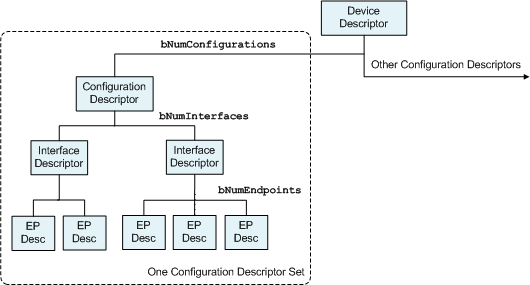|
||
| Products Download Events Support Videos | ||
Technical Support
On-Line Manuals
RL-ARM User's Guide (MDK v4)


 Device Configuration
Device Configuration
When a USB device is attached to or removed from the USB, the host uses a process known as bus enumeration to identify and manage the device.
The data requested by the host are stored in a hierarchy of descriptors. Descriptors are arrays of data, which fully describe the device.
The minimum and required number of descriptors are:
- One Device Descriptor.
- One Configuration Descriptor.
- One Interface Descriptor.
- Three Endpoint Descriptors (one control, one IN, and one OUT).

Complex devices have multiple interfaces. Each interface can have a number of endpoints representing a functional unit. For example, a voice-over-IP phone might have:
- One audio class interface with 2 endpoints for transferring audio data in each direction.
- One HID interface with a single IN interrupt endpoint for a built-in keypad.
ProductsDevelopment Tools |
Hardware & Collateral |
Downloads |
Support |
Contact |
